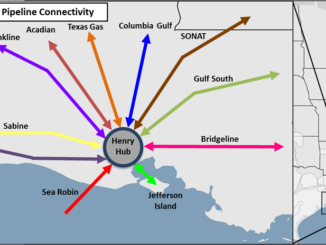
The pummeling received by the oil market in 2020 and a subsequent slump in the valuations of energy stocks is well documented. As the Covid-19 global pandemic triggered an economic downturn – following national lockdowns, curbs on mobility and lower consumer confidence – crude oil prices took an inevitable beating.
Few imagined the general economic and social malaise would plunge oil prices into negative territory, but it briefly did on April 20, 2020. That didn’t last long; and WTI futures ended the year down 21% on levels recorded on January 2, 2020 at $48.52 per barrel, while Brent ended 22% lower on an annualized basis at $51.80 per barrel.
Doomsday crude demand decline forecasts of 20 million barrels per day (bpd) on 2019 levels also proved to be unfounded with the actual figure likely around 9 million bpd. While that still wipes out around a decade of demand growth, a bounce back in 2021 is likely to be just as solid helped by the easing of human and economic misery courtesy of the rollout of Covid-19 vaccines.
Even if a recovery in aviation fuel demand is unlikely in the eyes of some before 2024, petrochemical, industrial and emerging market/ex-OECD ground transportation demand will aid market recovery. That recovery will be modest owing to supply-side pressures, regardless of what OPEC+ does or doesn’t do because non-OPEC crude production will see an uptick on $50-plus Brent prices.
U.S. shale remains wounded but not dead, and will add to the non-OPEC barrel count. Furthermore, an incoming Joe Biden administration in the U.S. might prove instrumental in triggering a modest increment in Iranian barrels on the market.
Based on the said supply-demand dynamic as I perceive it to be for 2021, the oil price is likely to average $55 using Brent as a benchmark. While it’s a level that might disappoint some within OPEC’s ranks, for many international oil companies (IOCs), it’ll do just fine. It also carries good potential for a reversal in oil and gas share prices, for despite the ceaseless din about the age of oil being over; it isn’t going to be over in the next 12 months.
On my sampling average of major oil and gas stocks, 2020 valuations fell by an average of ~35% if you include the fortunes of Saudi Aramco (TADAWUL:2222) whose stock price actually rose by 9.55% to SAR35 ($9.32) over the course of the last 12 months. However, I don’t consider the company, which only has a minuscule 1.5% publicly-listed on a domestic exchange, to be an accurate barometer of energy stock prices and market direction.
Excluding Aramco, my sample sector stock valuation decline is closer to 39% – something that’s more reflective of a knee-jerk reaction to a Covid-19 downturn rather than a near-term alteration of energy market fundamentals courtesy of a rising focus on electrification and electric mobility powered by renewable energy.
Even if transportation and human mobility are unwisely deemed to be the only crude consumption benchmarks, an assumption that oil would be pulled out of the energy dynamic in the very near-term is daft. Hence, 2021 will likely see double-digit reversals in energy stock prices of as high as 15% or above over the next 12-months with a $55 Brent price; a recouping of nearly half of their lost value.
Not all will benefit equally. That’s largely down their own tepid holdings portfolio, barmy financial decisions, and lack of process optimization and internal transformation that pre-date the pandemic. This is epitomized by Occidental Petroleum (NYSE:OXY) which saw its value drop by 60% year-on-year to December 30, 2020 on the fallout from an ill-judged takeover of Anadarko Petroleum.
OXY
Bigger players such as market behemoth ExxonMobil XOM -0.9% (NYSE:XOM / down 41% y/y) and Royal Dutch Shell (LON:RDSB / down 44% y/y) have suffered as well on visible market perceptions, if not a failing, when it comes to corporate transformation and massive asset write-downs.
Exxon
Shell
for the rest of the story at Forbs



